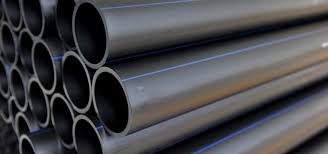Nov . 07, 2024 08:25 Back to list
HDPE Pipe Manufacturing Processes and Benefits for Various Applications
Understanding HDPE Pipe Properties, Applications, and Manufacturing
High-Density Polyethylene (HDPE) pipes have become an essential element in various industries due to their remarkable properties and versatile applications. As a globally recognized material, HDPE is engineered for durability and efficiency, making it a favored choice for piping systems. This article delves into the characteristics, manufacturing processes, and applications of HDPE pipes, shedding light on why they are a superior choice for modern infrastructure.
Properties of HDPE Pipes
HDPE pipes exhibit a range of beneficial characteristics that contribute to their widespread use. Firstly, their high resistance to chemicals and corrosion far exceeds that of traditional materials like metals. This makes HDPE ideal for transporting a variety of substances, including potable water, wastewater, chemicals, and gases. Additionally, HDPE’s low friction coefficient significantly reduces flow resistance, enhancing the overall efficiency of piping systems.
Another notable property is the flexibility of HDPE pipes. Unlike rigid piping systems, HDPE can bend and adapt to various terrains, allowing for easier installation and improved resilience against external pressures. Furthermore, HDPE is lightweight, making transportation and handling straightforward, thus reducing labor costs during installation.
One of the standout features of HDPE is its longevity. With a lifespan that can exceed 50 years when properly installed, HDPE pipes are an investment in sustainable infrastructure. They also require minimal maintenance, primarily due to their resistance to biofouling and scaling, which can be critical in ensuring uninterrupted service.
Manufacturing Process
The production of HDPE pipes is a technically advanced process that begins with the polymerization of ethylene gas derived from petroleum. The process involves several steps
hdpe pipe pdf factory

1. Polymerization Ethylene undergoes a chemical reaction under specific conditions to create HDPE, which is a high molecular weight polymer. 2. Extrusion The polymer is then melted and extruded into a pipe shape through a die. This allows for the creation of various diameters and wall thicknesses to meet specific requirements. 3. Cooling and Sizing The extruded pipe is cooled to solidify its structure. This is often done using a water bath or air cooling, which helps maintain the desired pipe dimensions. 4. Cutting and Inspection Once cooled, the pipes are cut to specified lengths and undergo rigorous inspection to ensure they meet industry standards. This may include tests for wall thickness, impact resistance, and pressure capability.
Quality control is paramount throughout the manufacturing process. Manufacturers frequently adhere to standards set by organizations such as ASTM and ISO to ensure the pipes' performance and safety.
Applications of HDPE Pipes
HDPE pipes have a diverse range of applications across various sectors
- Water Supply and Distribution HDPE is widely used for potable water systems due to its non-toxic and corrosion-resistant properties. Municipalities often opt for HDPE pipes for their drinking water supply lines. - Wastewater Management Many sewer systems utilize HDPE because it can withstand the harsh environments often found in wastewater applications. Its flexibility allows it to be installed in challenging terrains with minimal disruptions. - Gas Distribution The gas industry has embraced HDPE pipes for their ability to safely transport natural gas and other volatile substances, thanks to their resistance to stress and environmental factors. - Irrigation Agricultural applications benefit from HDPE's lightweight nature and UV resistance, making it an excellent choice for irrigation systems that require durability and flexibility.
Conclusion
HDPE pipes represent a modern solution to the challenges faced by traditional piping materials. With their exceptional durability, resistance to chemicals, and versatile applications, they continue to rise in popularity across numerous industries. As infrastructure demands evolve, the adoption of HDPE pipes stands at the forefront of innovation, demonstrating a commitment to sustainable and efficient engineering practices. In a world where resource management and environmental considerations are increasingly important, HDPE pipes are not just a choice but a necessity.
-
High-Quality PVC Borehole Pipes Durable & Versatile Pipe Solutions
NewsJul.08,2025
-
High-Quality PVC Perforated Pipes for Efficient Drainage Leading Manufacturers & Factories
NewsJul.08,2025
-
High-Quality PVC Borehole Pipes Durable Pipe Solutions by Leading Manufacturer
NewsJul.08,2025
-
High-Quality PVC Borehole Pipes Reliable PVC Pipe Manufacturer Solutions
NewsJul.07,2025
-
High-Quality UPVC Drain Pipes Durable HDPE & Drain Pipe Solutions
NewsJul.07,2025
-
High-Quality Conduit Pipes & HDPE Conduit Fittings Manufacturer Reliable Factory Supply
NewsJul.06,2025

